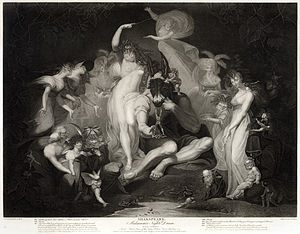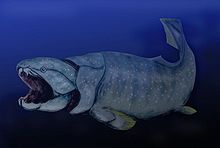 In honor of the April 26, 1564 baptism of William Shakespeare and his death on April 23, 1616, I have gathered a few of the best quotes about dreams from characters in his plays. Let me know if you’ve got other good ones!
In honor of the April 26, 1564 baptism of William Shakespeare and his death on April 23, 1616, I have gathered a few of the best quotes about dreams from characters in his plays. Let me know if you’ve got other good ones!
Prospero: “We are such stuff as dreams are made on, and our little life is rounded with a sleep.”
The Tempest, IV.i.156-158
“All days are nights to see till I see thee/And nights bright days when dreams do show me thee.”
Sonnet 43, 13-14
Gloucester: “My troublous dreams this night doth make me sad.”
Duchess: “What dreamed my lord? Tell me, and I’ll requite it with sweet rehearsal of my morning’s dream.”
Henry VI, Part II, I.ii.22-24
Romeo: “I dreamt a dream tonight.”
Mercutio: “And so did I.”
Romeo: “Well, what was yours?”
Mercutio: “That dreamers often lie.”
Romeo: “In bed asleep, while they do dream things true.”
Mercutio: “Oh, then I see Queen Mab hath been with you. She is the fairies’ midwife…”
Romeo and Juliet, I.iv.52-58
Horatio: “O day and night, but this is wondrous strange!”
Hamlet: “And therefore as a stranger give it welcome. There are more things in heaven and earth, Horatio, than are dreamt of in your philosophy.”
Hamlet, I.v.164-167

Hamlet: “To die, to sleep–No more–and by a sleep to say we end the heartache, and the thousand natural shocks that flesh is heir to. ‘Tis a consummation devoutly to be wished. To die, to sleep–To sleep–perchance to dream: ay, there’s the rub, for in that sleep of death what dreams may come when we have shuffled off this mortal coil, must give us pause.”
Hamlet, III.i.60-68
Puck: “If we shadows have offended, think but this and all is mended, that you have but slumber’d here, while these visions did appear. And this weak and idle theme, no more yielding but a dream.”
Midsummer Night’s Dream, V.i.425-430
Here’s a link to the search page for the OpenSource Shakespeare website, where you can type in “dream” and find all references to dreaming in Shakespeare’s works.
 In today’s Oregonian newspaper I published a commentary piece titled “The politics of dreaming: Even in sleep, Americans show a partisan divide” (4/30/12, p. A9). It’s the latest version of my ongoing study of the interplay of sleep, dreams, and political ideology.
In today’s Oregonian newspaper I published a commentary piece titled “The politics of dreaming: Even in sleep, Americans show a partisan divide” (4/30/12, p. A9). It’s the latest version of my ongoing study of the interplay of sleep, dreams, and political ideology.





